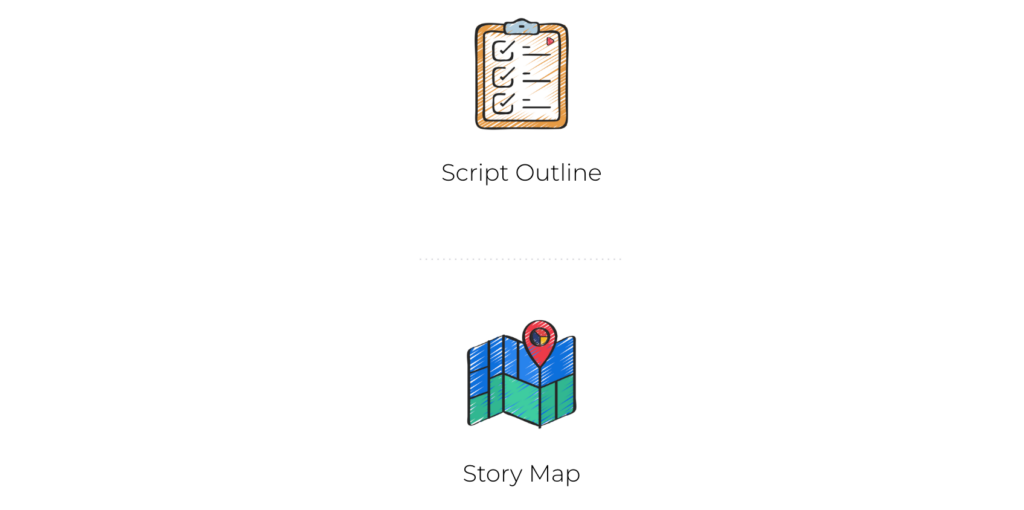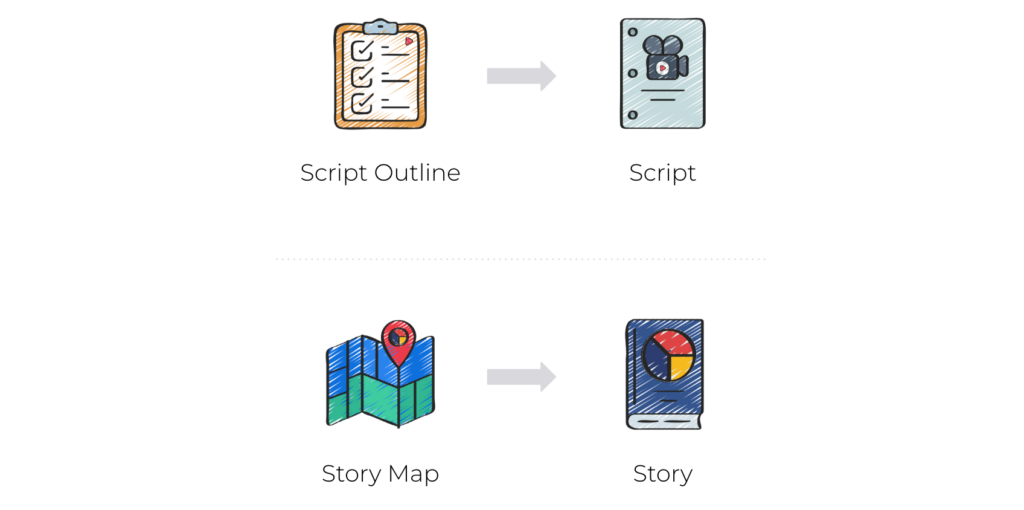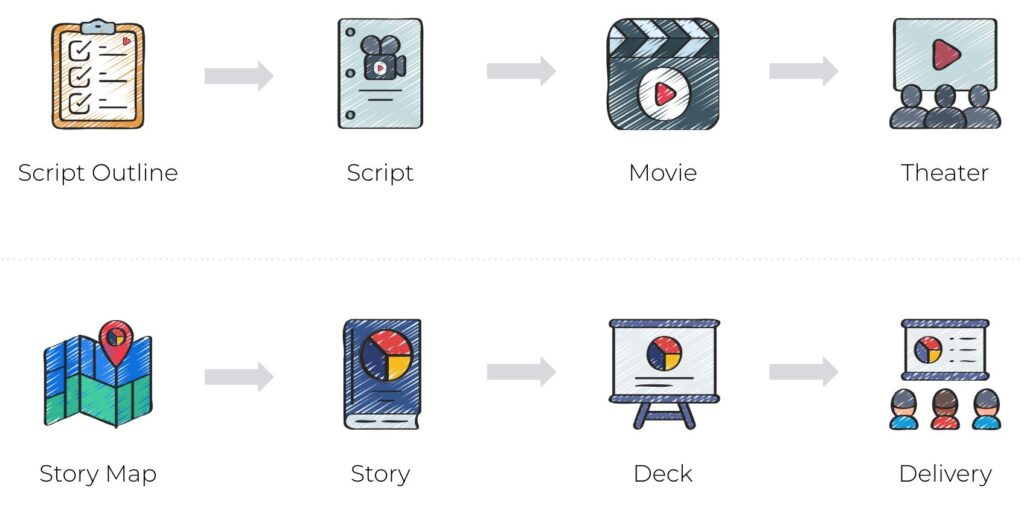Could movies be the secret to advancing your career?
It sounds surprising, but the storytelling techniques used in Hollywood have a lot to teach us.
You know storytelling is a key skill for any Product Manager. Even more for aspiring Product Leaders. You want to apply it in your daily communication.
But you feel lost.
Nobody actually teaches you how to be a great storyteller. You read about loose principles you can follow, but you don’t have any proven method.
That’s about to change.
In this article, I present an analogy that makes storytelling much more approachable.
Something to keep in mind when creating your next presentation. A framework that will guide you through four key stages. And yes, it has something to do with the movies.
Ready? Lights, camera, action!
Don’t Make This Mistake
What’s the number #1 mistake PMs make when asked to present?
They immediately open a deck and start making slides.
But this sets you up for failure. It skips crucial planning steps and generates disorganized, ineffective content. Instead of grabbing an opportunity to shine, you miss it.
Remember – if you fail to plan, you plan to fail!
The better way to do it? Following the way scriptwriters and movie directors work.
What We Can Learn From the Movies
When a director is asked to make a movie, they don’t immediately pull out a camera and start filming scenes.
First, there is a series of steps that set up the conditions for them to, eventually, shoot the movie and release it to the audience.
Those same steps apply to storytelling. Follow them when preparing a presentation, and you’ll end up with a much better piece of work.
Here are the four steps involved in creating any movie or presentation:
Step 1: Script Outline & Story Map
Before the director starts shooting, the scriptwriter needs to do their share of the work.
But even the scriptwriter doesn’t simply start jotting down words on the page. They don’t start writing a script without a well-defined idea. They start with a script outline.
The scriptwriter highlights the key characters, plot points, and sequence of events. They think about the target audience for the movie, the emotions they should feel, and what they should take away when the movie ends.
Similarly, when you prepare a presentation, you want to start with a script outline. Or, as I call it in storytelling, your presentation’s “Story Map”.

As the scriptwriter or the storyteller, you should start by analyzing your target audience. Then, define how you want to transform them with your message. What are the key points that will lead to that transformation? Make a list.
Once you have this, you’re ready to move to the next step.
Step 2: Script Writing & Build Your Story
Equipped with an outline, the scriptwriter sits down to write the actual script.
This is not just about defining what happens in each scene. It’s also about making sure the script captivates the audience’s attention – and keeps it. It’s about ensuring the narrative flows, each scene logically following the previous one. The more thought and care they put into the script outline, the better the script will turn out.
When preparing a presentation, I call this step “Build Your Story”.

Just like with the movie script, your story needs to keep the focus of your audience. Use the Story Map you created in the previous step as your guide. Build on it by employing attention-capturing techniques and developing a well-structured narrative.
For example, one way to capture your audience’s attention is to build a mystery.
You can say something like “I’m now going to walk you through our plan to build this feature. It turns out, there was one obstacle that almost derailed the entire project. I’ll talk about it in a little bit.”
Can you see how a mystery can captivate an audience’s attention?
Step 3: Shooting the Movie & Designing Your Deck
The script is ready. It’s time for the director to start shooting the scenes.
Only now, in step three, does the director start filming. Most PMs, however, make the mistake of jumping straight to creating slides without proper preparation.
If you’ve been following the process so far – you’re prepared. You created your story outline, then built your story. Now, it’s time to create the visuals that will go with your message.

There is an art to doing this well.
Think about movie-making again. You can have a great movie script, but if all your scenes are extreme close-ups or poorly lit, the movie is going to be a flop.

Similarly, issues of this kind can cause your presentation to fail. Carefully design each slide, and make sure the deck has a cohesive identity. It will make the presentation much more appealing to your audience.
For example, good slide design is about taking away 2 things: distractions, and information density.
Just remember this: when in doubt, leave it out, or spread it out.
This leads us to the final step…
Step 4: Playing in Theaters & Delivering Your Presentation
The movie is finished (your presentation is ready) but the journey doesn’t end there.
It’s now time to play the movie in the theaters. And if you think the environment and delivery don’t affect people’s perception of the movie, think again.
You might have a great movie, but the delivery has to live up to it. In the theaters, the sound volume has to be right, the lighting in the room has to be dim, the popcorn needs to be fresh…
In the same way, the delivery of your presentation is key to making it stand out. It’s the final dash of magic that makes the theater a much more emotional experience than watching a movie at home.

How can you achieve this? Rehearse your presentation, read and react to the audience as you deliver, and follow up promptly afterward.
Final Thoughts
Next time you need to prepare a presentation, try following this structure.

Don’t skip any of the steps, even if it feels like you don’t need it. In the end, you’ll see the transformation in your audience, and you’ll know you have succeeded.
If you’re still unsure about how to apply these techniques, don’t worry. I’ve designed a course that dives deeper into every step of the process.
Persuasive Storytelling lets you in on the techniques I used to lead organizations of 300+ people at Google while building a reputation as a storyteller.
Ready to do the same? You can sign up here.
See you there!


